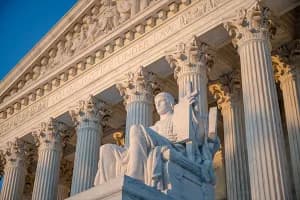A federal appellate court has considered the limits for environmental regulation of "navigable waters" under federal law.
An employee of Needham Resources, Inc. ("Company"), pumped oil from a processing facility into a drainage ditch. A complaint was filed with the Louisiana Department of Environment Quality over the spill, and Environmental Protection Agency ("EPA") also investigated the spill. Initially, the Company hired a consultant to clean-up the site, but the Company lacked the financial resources to complete the clean-up. The EPA and the United States Coast Guard then assumed responsibility for the remainder of the clean-up.
In February 1998, James H. and Janell R. Needham ("Debtors"), owners of the Company, filed a Chapter 11 bankruptcy petition. The next day, the United States of America ("Government") brought a lawsuit against the Debtors, the Company, and another party for the costs of the cleanup, based on statutory provisions found in the Oil Pollution Act ("Act"). The bankruptcy court stayed the Government's lawsuit pending the resolution of the bankruptcy case.
In the bankruptcy case, the EPA filed a proof of claim against the Debtors for the costs of the cleanup. The Debtors objected to the EPA's proof of claim, arguing that because the spill did not involve navigable waters, it was outside the scope of the Act. The parties stipulated to the following: oil was discharged into the ditch, then the oil spilled from the ditch into the Bayou Cutoff, and finally spilled into Bayou Folse. Bayou Folse flows into a waterway known as the Company Canal, which is an industrial waterway containing shipyards and other commercial shipping operations. The Company Canal eventually flows into the Gulf of Mexico.
The bankruptcy court ruled that the drainage ditch was not a navigable waterway nor was it "adjacent" to navigable waters, and therefore ruled that the EPA's claims were outside the scope of the Act. A federal trial court affirmed the ruling of the bankruptcy court, and the EPA appealed.
The United States Court of Appeals for the Fifth Circuit agreed with the rationale employed by the lower courts, but disagreed with their interpretation of the evidence and so reversed their decision. The question before the court was whether the oil had spilled into navigable waters, a term used but not defined in the Act as well as in the Clean Water Act ("CWA"). The Government argued that "navigable waters" includes all waters where a hydrological connection to navigable-in-fact waters can be established and so could include the ditch. Two other federal appellate courts have adopted the government's argument.
The court rejected the government's argument. Looking at the SWANCC decision by the Supreme Court of the United States (click here to read a summary of the decision), the court found that Supreme Court had ruled that the CWA does not apply to isolated, non-navigable waters (at issue in that case was a pond formed every spring from flood waters). Additionally, an earlier Fifth Circuit decision had also determined that the Act and CWA only apply to navigable-in-fact waters or waters adjacent to navigable-in-fact waters. Thus, the court ruled that the Government could not regulate non-navigable, isolated waters like the ditch, even if the Government could establish such waters had a hydrological connection to navigable waters.
However, the court ruled that the lower courts had misinterpreted the evidence before it. The evidence established that the oil spill had reached Bayou Folse. Since the Company Canal is a navigable waterway and Bayou Folse flows directly into the Company Canal, the court found that Bayou Folse is "adjacent" to navigable waters. Since the oil spill reached waters adjacent to navigable waters, the court ruled that the Act's regulatory powers could be invoked against the Debtors. Thus, the court reversed the lower court and sent the case back to the bankruptcy court for further proceedings.
United States of America v. Needham (In re Needham), NO. 02-30217, 2003 WL 22953383 (5th Cir. Dec 16, 2003). [This is a citation to a Westlaw document. Westlaw is a subscription, on-line legal research service. If an official reporter citation should become available for this case, the citation will be updated to reflect this information].
Editor's Note: NAR participated in a coalition which filed an amicus curiae brief supporting the Fifth Circuit's rejection of the Government's expansive definition of navigable waters. The coalition is also filing an amicus curiae brief with the Supreme Court of the United States in support of a challenge to a decision by another federal appellate court adopting the Government's expansive definition of "navigable waters."








